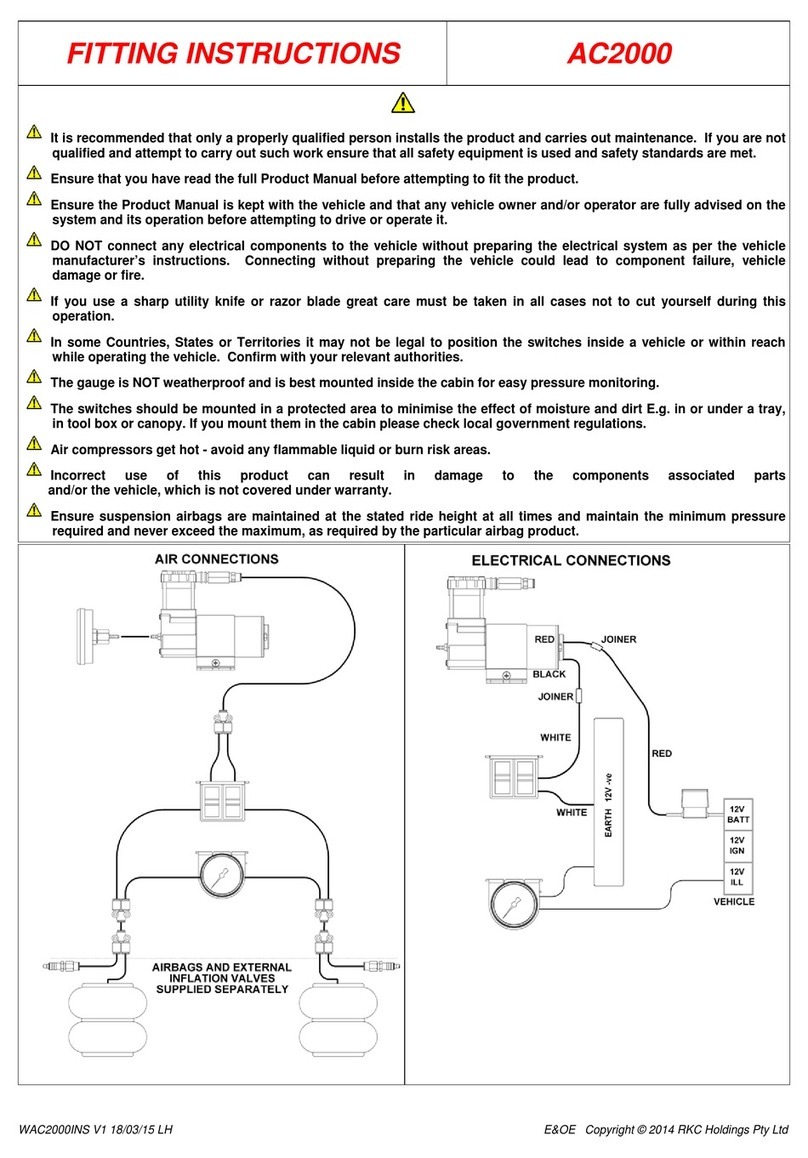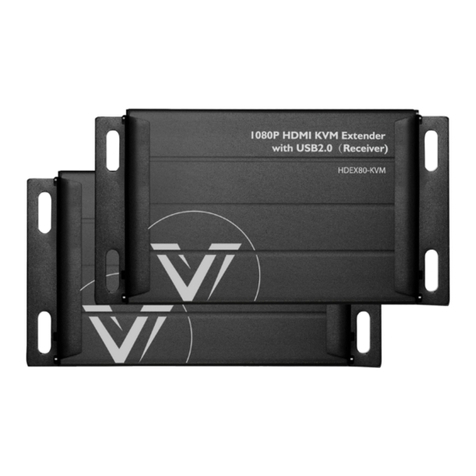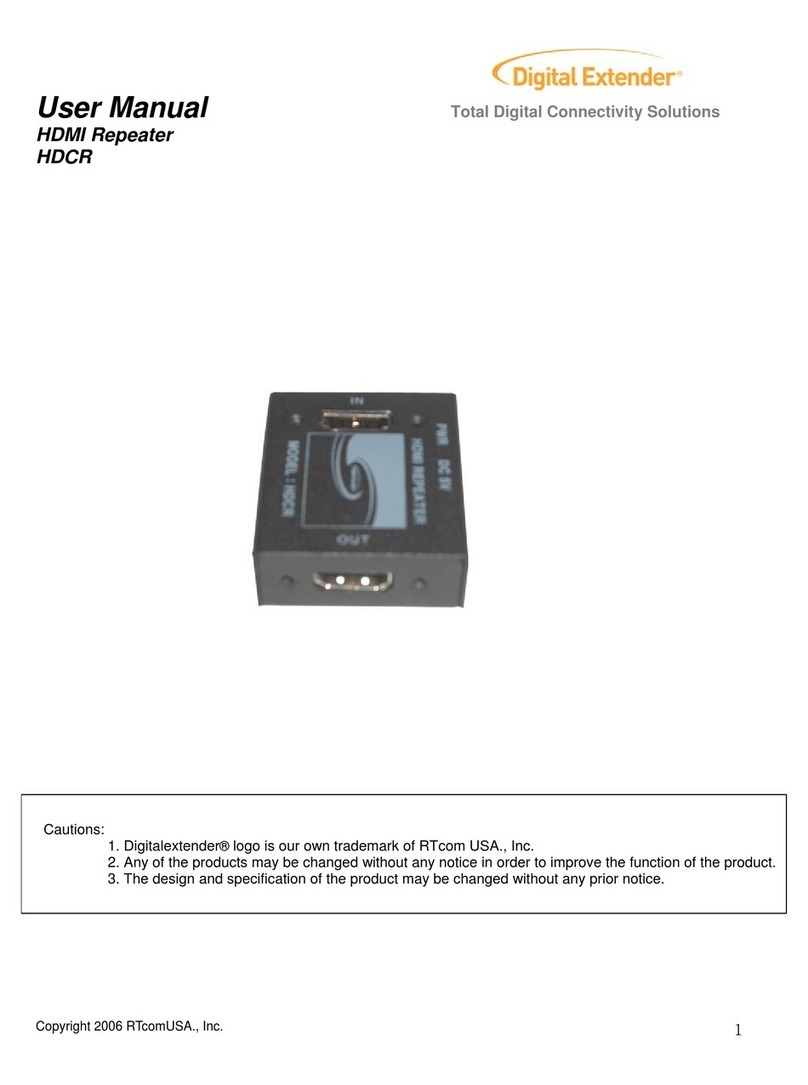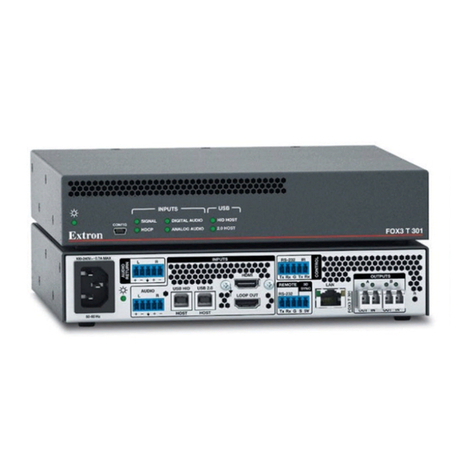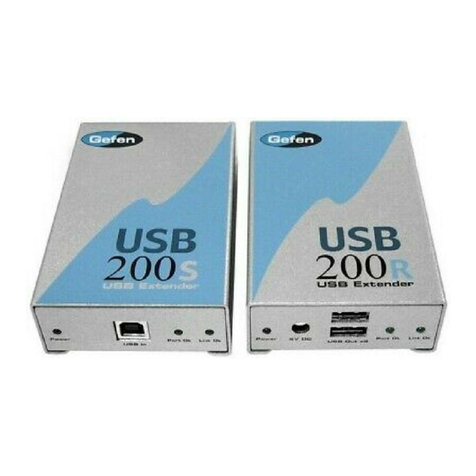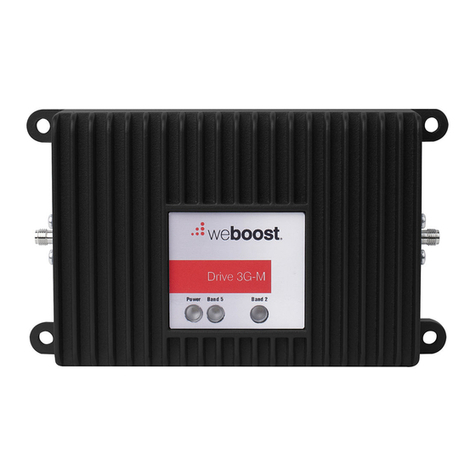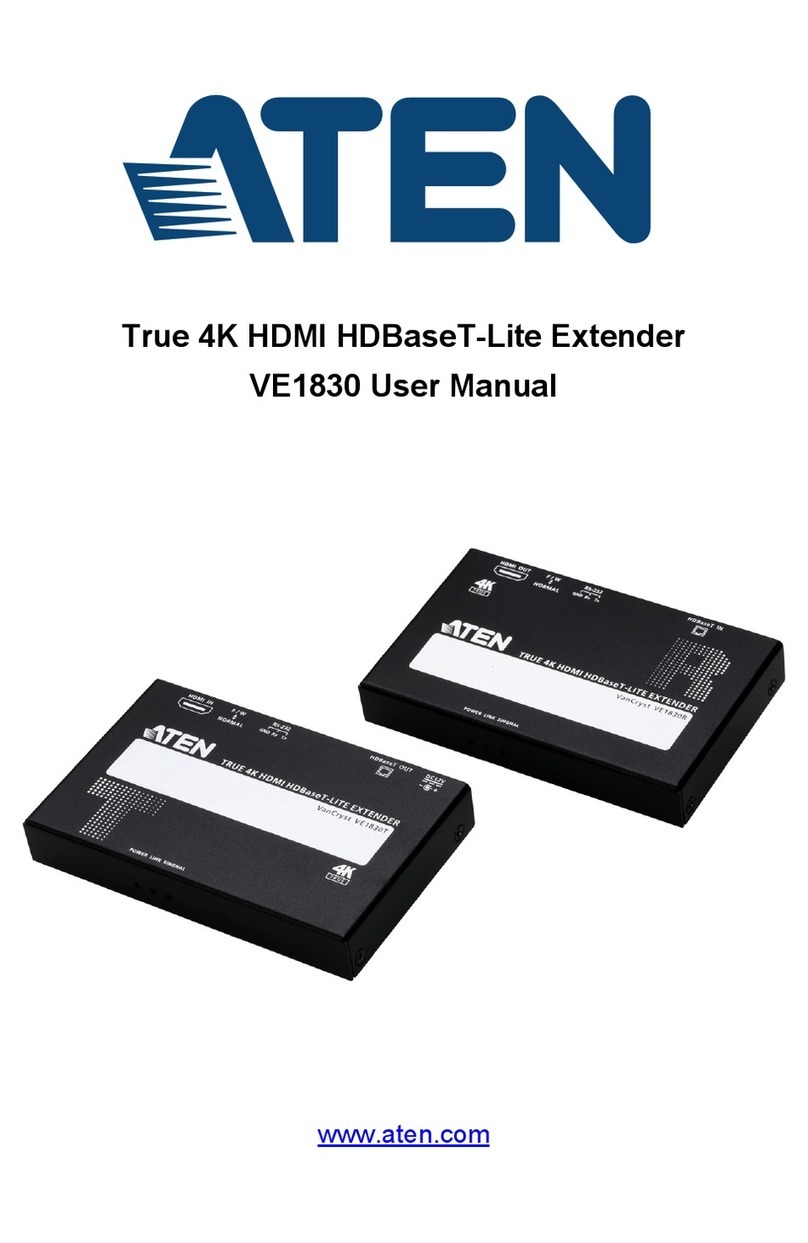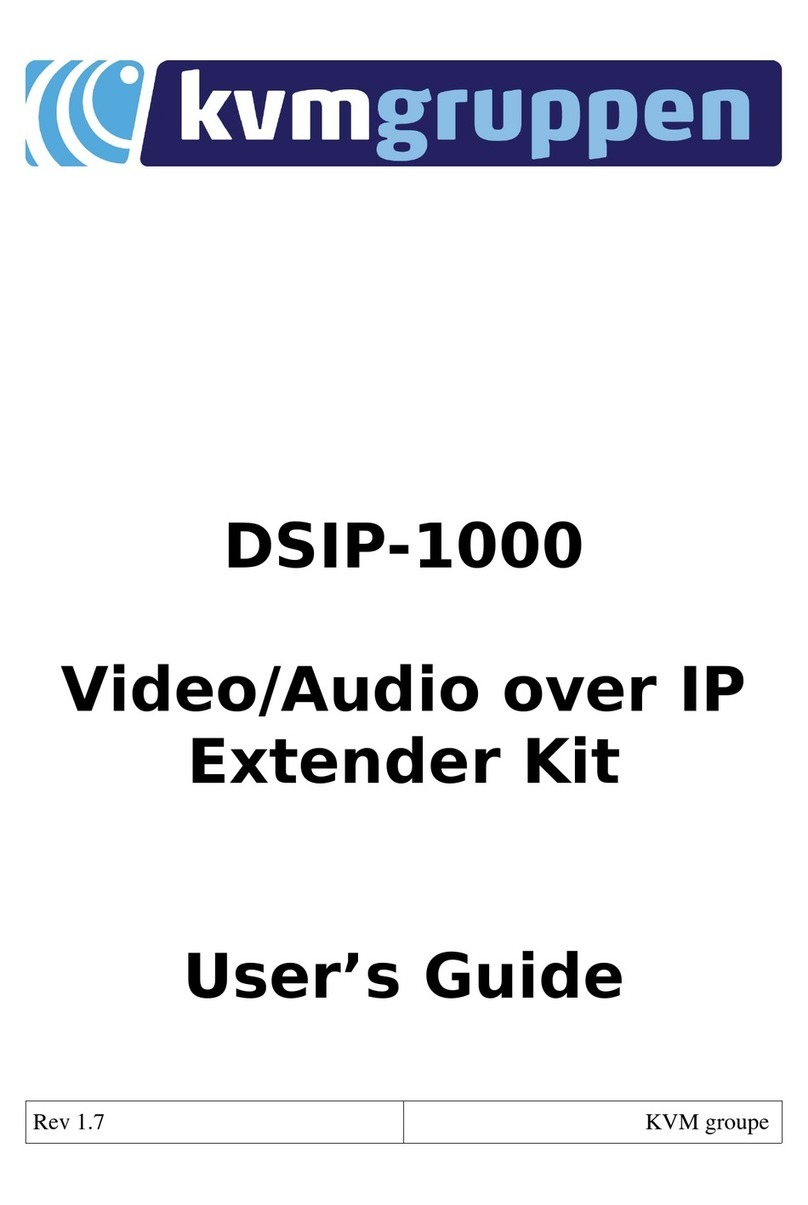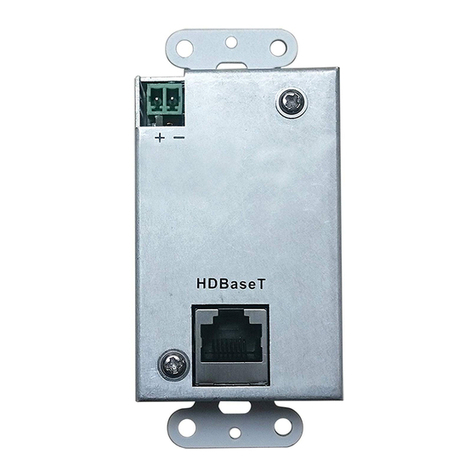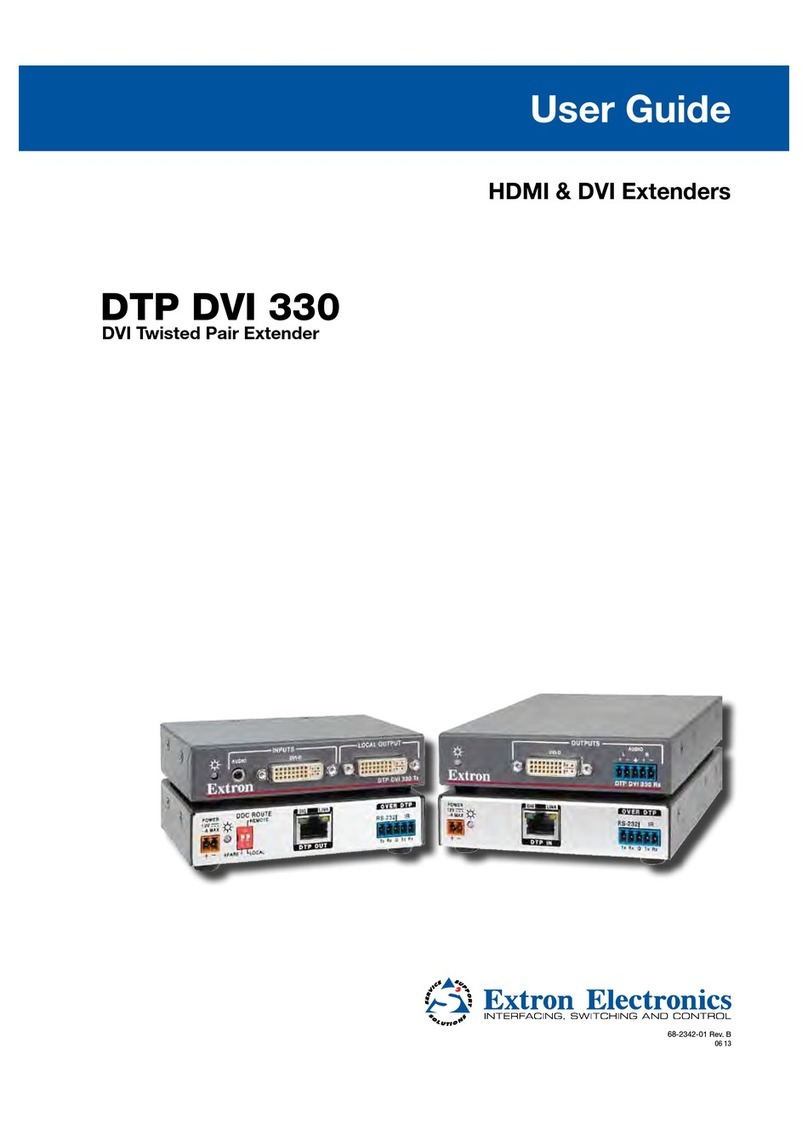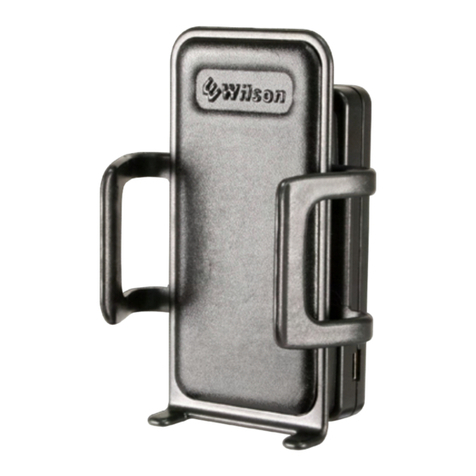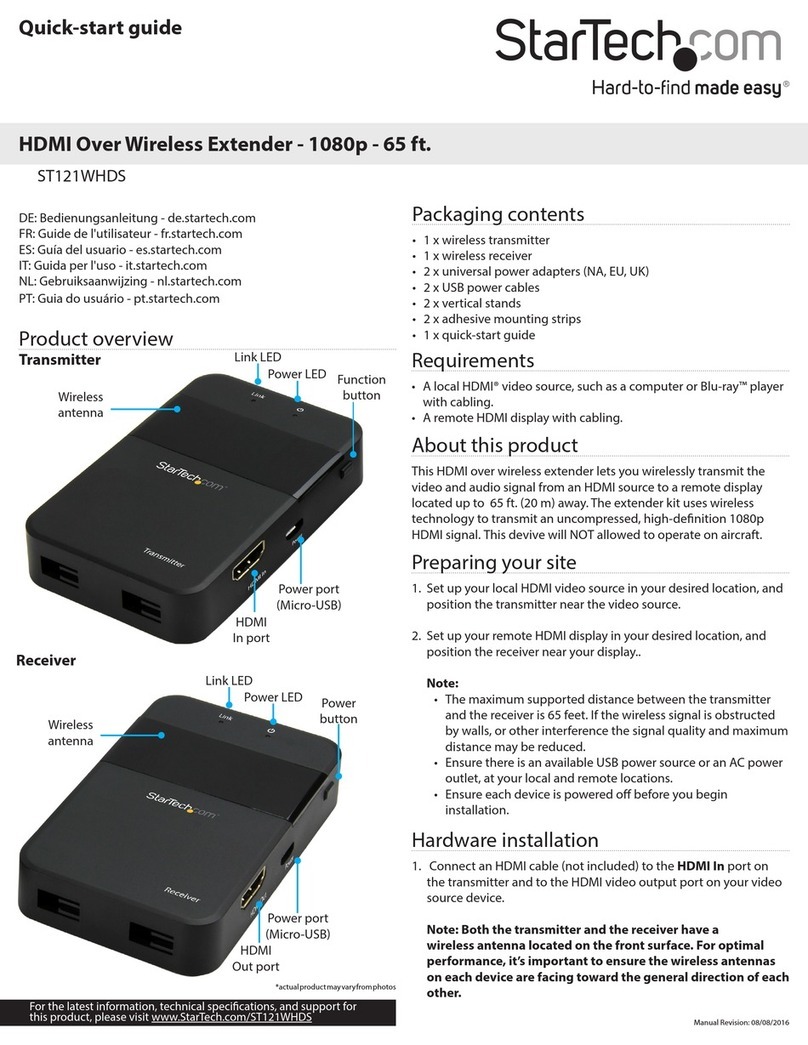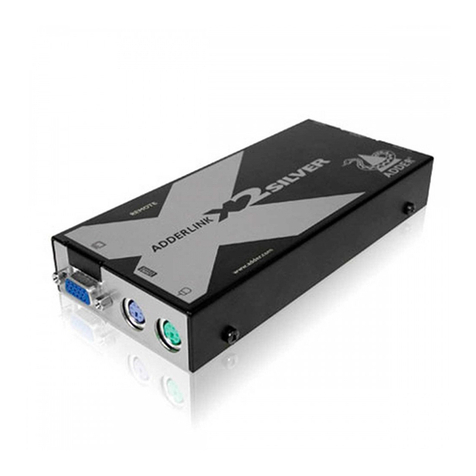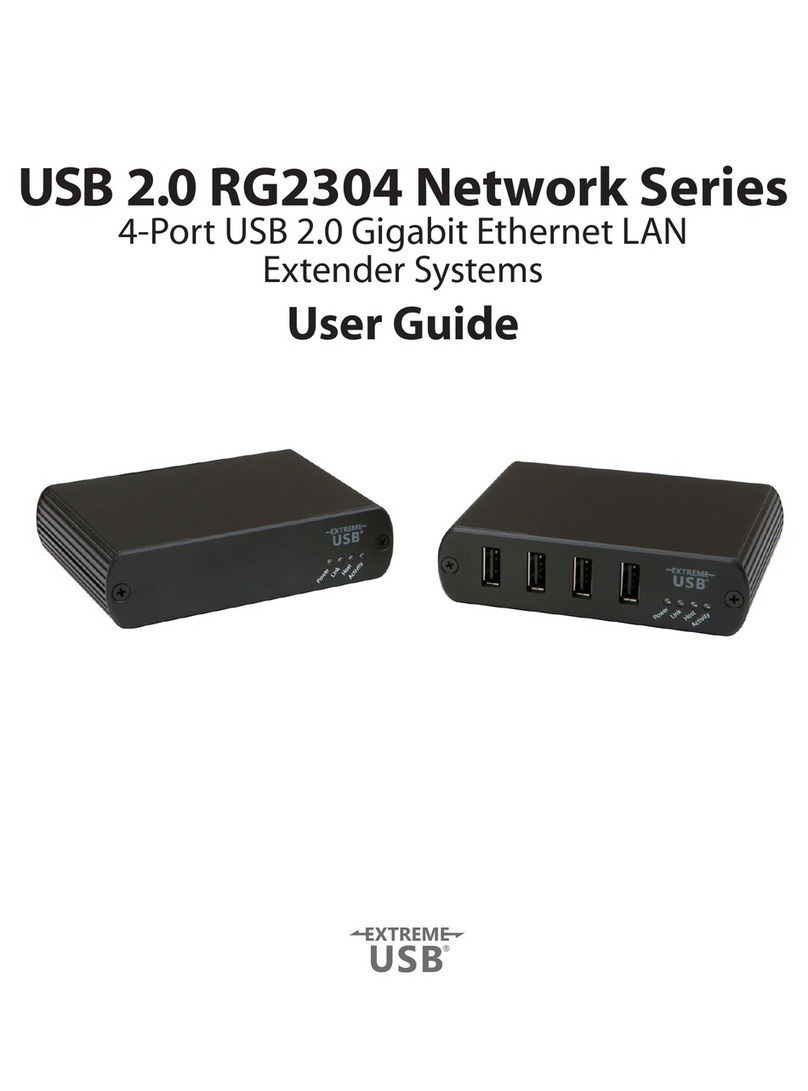NetworX NX-507E Installation manual

NetworX™Series
NX-507E RELAY EXPANDER
NX-508E OUTPUT EXPANDER
Installation and Startup


NX-507E / NX-508E AUXILIARY MODULES
3
TABLE OF CONTENTS
I. GENERAL DESCRIPTION ...............................................................................................4
II. WIRING INFORMATION ................................................................................................4
III. NX-507E TERMINAL DESCRIPTION .............................................................................5
IV. NX-507E DRAWING.......................................................................................................6
V. NX-508E TERMINAL DESCRIPTION .............................................................................7
VI. NX-508E DRAWING.......................................................................................................7
VII. INSTALLING THE MODULES......................................................................................... 8
VIII. ENROLLING THE MODULES .........................................................................................8
IX. PROGRAMMING THE MODULES..................................................................................8
X. PROGRAMMING LOCATIONS....................................................................................... 9
XI. PROGRAMMING EXAMPLES .......................................................................................13
XII. PROGRAMMING WORKSHEETS .................................................................................14
XIII. ENCLOSURE DIAGRAM ...............................................................................................25
XIV. SPECIFICATIONS..........................................................................................................26

4 NX-507E / NX-508E AUXILIARY MODULES
I. GENERAL DESCRIPTION
The NetworX NX-507E and NX-508E are auxiliary modules used to expand the capabilities of the NetworX
control panels. While each unit has some unique features described in this section and also in the terminal
descriptions, the basic installation and programming instructions are applicable to both modules.
NX-507E SEVEN RELAY EXPANDER
$ Microprocessor controlled 7-relay module
$ Designed with 7 separate normally open and normally closed relay contacts for a variety of applications,
including access control, home control/automation, wireless interfaces, and security functions. Note: Access
control and home automation have not been verified by UL testing.
$ Includes 1 low current trigger output (output 8)
$ Up to 8 modules can be connected to the NetworX control panel
$ Can be programmed to activate for an event in any or all partitions
$ Each relay can be programmed to follow up to 8 different schedules to either activate the relay during the
“on” time, or used in conjunction with another programming option to create time zones
$ Has an optional tamper switch and auxiliary power terminal (see terminal descriptions) making it ideal for
use in a remote location
NX-508E EIGHT OUTPUT EXPANDER
$ Microprocessor controlled 8-output module
$ Equipped with 8 low current trigger outputs (see terminal drawing)
$ Up to 8 modules can be added for a total output count of 64
$ Each output can be programmed to follow up to 8 different schedules to either activate the output during the
“on” time, or used in conjunction with another programming option to create time zones
$ Has an optional tamper switch and auxiliary power terminal (refer to terminal descriptions on pages 5-7)
making it ideal for use in a remote location
$ Has a built-in parallel interface for local printouts of all communicator activity
$ THE NX-508E MODEL IS NOT LISTED FOR UL COMMERCIAL FIRE.
II. WIRING INFORMATION
NX-507E
(ALL RELAYS ACTIVE) NX-507E (NO RELAYS ACTIVE) and NX-508E
Maximum Wire Run When Connected to
NX control panel
Maximum Wire Run When Connected to
NX-320E
Maximum Wire Run
Connected to NX
Control panel or NX-
320E Using AUX
NOT using Aux Using AUX
NOT using Aux
250= = 20 AWG
500= = 16 AWG
1000= = 14 AWG
1500= = 12 AWG
2500= = 10 AWG
250= = 24 AWG
500= = 20 AWG
1000= = 18 AWG
1500= = 16 AWG
2500= = 14 AWG
250= = 24 AWG
750= = 24 AWG
1000= = 22 AWG
2000= = 20 AWG
2500= = 18 AWG
250= = 22 AWG
500= = 18 AWG
1000= = 16 AWG
1500= = 14 AWG
2500= = 12 AWG
500= = 22 AWG
750= = 20 AWG
1000= = 20 AWG
2000= = 16 AWG
2500= = 16 AWG

NX-507E / NX-508E AUXILIARY MODULES
5
III. NX-507E TERMINAL DESCRIPTION
DATA Connect to the control panel DATA terminal. This terminal is the data-signaling terminal to all the
devices on the buss.
COM Connect to the control panel COMMON
terminal. This terminal supplies the common side of the
power to the NX-507E board.
POS Connect to control panel AUX POWER + terminal. This terminal supplies power to the NX-507E
board.
TAM
This is an option tamper terminal. To use this feature, connect the normally closed tamper switch
between this terminal and COM. If this feature is not used, a jumper must be connected between
this terminal and common.
COM Connect to the tamper terminal through a normally closed contact.
This terminal can supply up to 100 mA fused separate from the power in the control panel.
AUX
Any power drain from this terminal should be included in total current draw from the
NetworX control panel or NX-320E Power Supply as applicable. This allows an isolation
of the power between the main control and remote devices. If a short is created past the
AUX terminal, those devices will cease to function, but the other devices, including the NX-
507E, will continue to operate. The NX-507E will report this problem to the control for
display on the keypad as an expander power trouble.
7NC Normally closed dry contact rated 1 Amp at 30 Volts.
7COM Common dry contact rated 1 Amp at 30 VDC.
RELAY 7
7NO Normally open dry contact rated 1 Amp at 30 Volts.
RELAYS 1-6 Same as Relay 7 shown above.
OUTPUT 8
Open collector output that switches to GND when activated -
capable of up to 100 mA. NOTE: If
device is connected to output, it must see the transition from 13V to GND. Part # 8915 can be used
to connect to Output 8.

6 NX-507E / NX-508E AUXILIARY MODULES
IV. NX-507E DRAWING
A
ll outputs are Class 2, power limited.

NX-507E / NX-508E AUXILIARY MODULES
7
V. NX-508E TERMINAL DESCRIPTION
DATA Connect to the control panel DATA terminal. This terminal is the data-signaling terminal to all the
devices on the buss.
COM Connect to the control panel COMMON terminal. This terminal supplies the common side of the
power to the NX-508E board.
POS Connect to control panel AUX POWER + terminal. This terminal supplies power to the NX-508E
board.
TAM
This is an optional tamper terminal. To use this feature, connect the normally closed tamper switch
between this terminal and COM. If this feature is not used, a jumper must be connected between
this terminal and common.
COM Connect to the tamper terminal through a normally closed contact.
This terminal can supply up to 100 mA fused separate from the power in the control panel.
AUX
Any power drain from this terminal should be included in total current draw from the
NetworX control panel or NX-320E as applicable. This allows an isolation of the power
between the main control and remote devices. If a short is created past the AUX
terminal, those devices will cease to function, but the other devices, including the NX-
508E, will continue to operate. The NX-508E will report this problem to the control for
display on the keypad as an expander power trouble.
Out 1- 8
Open Collector outputs that switch to GND when activated -- capable of up to 100 mA. NOTE: If
device is connected to outputs, it must see the transition from 13V to GND. The enclosed resistors
must be used. Connect the resistor between AUX and the output being used.
VI. NX-508E DRAWING
4 P
OS
ITI
O
N
DIPSWITCH
X-10 PRO PSC04 INTERFACE
CONNECTION POINT
(Onlyrequires1persystem)
PARALLEL PRINTER
CONNECTION
12
/
10
/
98
CONNECTTO
CONTROL PANEL

8 NX-507E / NX-508E AUXILIARY MODULES
VII. INSTALLING THE MODULES
The first thing that must be decided is the address of this particular relay/output module. This is the address that
will be selected when programming the auxiliary devices. To set the addresses use the table below.
"DipSwitch 4 is used to disable the Tamper feature. ("On" = enabled / "Off" = disabled)
Table VII-1
Address
Dip Switch 1
Dip Switch 2
Dip Switch 3
24 ON ON OFF
25 OFF OFF ON
26 ON OFF ON
27 OFF ON ON
28 ON ON ON
29 OFF OFF OFF
30 ON OFF OFF
31 OFF ON OFF
VIII. ENROLLING THE MODULES
The NetworX control panels have the ability to automatically find and store in memory the presence of all
keypads, zone expanders, wireless receivers, output modules, and any other device on the keypad buss. This
allows these devices to be supervised by the control panel. To enroll the devices, enter the Program Mode using
the procedure outlined in the control panel Installation Manual. When the Program Mode is exited, the NX
control panel will automatically enroll the devices. The enrolling process takes about 12 seconds, during which
time the “Service” LED will illuminate. User codes will not be accepted during the enrolling process. Once a
module is enrolled, if it is not detected by the control, the “Service” LED will illuminate.
IX. PROGRAMMING THE MODULES
The Program Mode is accessed by entering [Á]-[8] (all of the function key LEDs will begin to flash). Enter the "Go
To Program" code (default is [9]-[7]-[1]-[3]). If the code was valid, the Service LED will flash, and the function
LEDs will illuminate steady, indicating the device to program should be entered. Next, enter the address of the
NX-508E you wish to program followed by [#] (refer to Table VII-1 on page 8). At this point, the Armed LED will
illuminate while it is waiting for a programming location to be entered. Enter the desired programming location.
The Armed LED will begin to flash while a programming location is being entered. Enter [#]. If this is a valid
location, the Armed LED will extinguish, the Ready LED will illuminate, and the binary data for the first segment of
this location will be shown on the zone LEDS. To change the data, enter the data followed by [Á]. The data will
be entered, and the location will automatically increment to the next segment. The data for that segment will be
displayed. This procedure is repeated until the last segment is reached. Pressing [#] will exit from this location.
To review the data, repeat the above procedure and press [Á] without entering data first. Each time [Á] is
pressed the next segment is displayed. Programming data is always one of two types of data. The first type is
numerical, and can take on values from 0-255 or 0-15 depending on the segment size. The second type is a
feature selection type. Feature selection data is used to turn features on or off. LCD Keypad Users Note: All
steps required for programming are the same as the aforementioned LED keypad. The LCD keypad display will
prompt you for the data required. While in the programming mode, and not in a location, the number in
parenthesis is the location you were previously changing. For example, if the display reads "Enter location, then
# (5)", it is reminding you that location 5 was the last location you programmed. In feature selection data, the
numbers of the enabled features will be displayed. The features not enabled will display a hyphen (-).

NX-507E / NX-508E AUXILIARY MODULES
9
X. PROGRAMMING LOCATIONS
Location 0 Programming the Event, Zone and Time for Output 1
(3 segments of numerical data) Location 0 is used to select the particular function, zone number, and time for
an output to trip.
Segment 1 (EVENT)
Selects the event that will trigger the output. See chart below for the specific
vents that can be selected.e
Segment 2 (ZONE/USER)
Selects the zone or user number necessary to trigger an output. If this location is
programmed as a zero, any zone or user will activate the output. (See also loc. 68,
age
p11)
Segment 3 (TIME)
Selects the amount of time an output will remain activated when an output
triggers. If this location is programmed as a zero, the output will follow the
particular event.
# Event # Event # Event
0 /Burglary Alarm 20 Entry or Exit 40 Box Tamper
1 /Fire Alarm 21 Armed 41 Siren Tamper
2 /24 Hour Alarm 22 Not Armed 42 Any Zone Faulted
3 /Zone Trouble 23 Ready 43 /Any Alarm
4 /Zone Tamper 24 Not Ready 44 Keypad Beeping
5 Burglary Siren 25 Fire 45 /Code Entry
6 Fire Siren 26 Fire Trouble 46 :Key FOB Function 1
7 Any Siren 27 Chime 47 :Key FOB Function 2
8 Zone Bypass 28 /Expander Trouble 48 Auto Arm Control
9 AC Failure 29 Dynamic Battery Test 49 Auto Disarm Control
10 System Low Battery 30 Open Schedule 50 Auto Arm & Disarm Control
11 /Duress 31 Closed Schedule 51 Follow schedule of NX-508E
12 /Manual Fire 32 Listen In 52 Flash X-10 for Alarm Memory
13 /Aux 2 Keypad 33 Line Seizure 53 Flash X-10 for Siren
14 /Keypad Panic 34 Failed to Communicate 54 Armed Away (Exit Expired)
15 Keypad Tamper 35 Telephone Line Fault 55 End Listen In (Integrated Only)
16 /Automatic Test 36 Program Mode 56 Follow X-10 Command
17 Alarm Memory 37 Download 57 Armed Stay
18 Entry 38 Ground Fault
19 Exit 39 Over Current
See loc. 52 & 53 in NX control panel
/If set to follow condition, these events will be 1 second.
:Events 46 & 47 require NX-408E, NX-416E, or NX-448E wireless receivers to operate. Events 48, 49, and 50 will arm
or disarm the NX control panel at the open (disarm) or close (arm) time for the appropriate schedule. See
example 3 on page 13.
Location 1 Programming Special Functions and Partitions for Output 1
(2 segments of binary data)
Segment 1 Selects the following special conditions: Address Out
p
ut
24 1-8
25 9-16
26 17-24
27 25-32
28 33-40
29 41-48
30 49-56
31 57-64
LED 1 - "On" if output should time in minutes; "Off" if output times in seconds.
LED 2 - "On" if output should latch until a code is entered.
LED 3 - "On" if output should reset if a code is entered while it is being timed.
LED 4 - "On" if output should only trigger during a closed schedule.
LED 5 - "On" if output should only trigger during an open schedule.
LED 6 - "On" if the output should be inverted.
LED 7 - "On" if a trigger should be logged in the event buffer. See chart.

10 NX-507E / NX-508E AUXILIARY MODULES
Segment 2 Selects the following partitions:
LED 1 - "On" if the event should activate when it occurs in Partition 1.
LED 2 - "On" if the event should activate when it occurs in Partition 2.
LED 3 - "On" if the event should activate when it occurs in Partition 3.
LED 4 - "On" if the event should activate when it occurs in Partition 4.
LED 5 - "On" if the event should activate when it occurs in Partition 5.
LED 6 - "On" if the event should activate when it occurs in Partition 6.
LED 7 - "On" if the event should activate when it occurs in Partition 7.
LED 8 - "On" if the event should activate when it occurs in Partition 8.
Location 2 Enabling the Schedules for Output 1
(1 segment of binary data) Location 2 is used to enable any or all of the eight (8) schedules. LED 1 corresponds
to Schedule 1 (see locations 32-34, page 10) and LED 8 corresponds to Schedule 8 (see locations 53-55, page 11).
This location can be used in conjunction with the Special Function location to create an output that will only
activate during certain times and/or certain days.
LED 1 - "On" if the event should follow Schedule 1.
LED 2 - "On" if the event should follow Schedule 2.
LED 3 - "On" if the event should follow Schedule 3.
LED 4 - "On" if the event should follow Schedule 4.
LED 5 - "On" if the event should follow Schedule 5.
LED 6 - "On" if the event should follow Schedule 6.
LED 7 - "On" if the event should follow Schedule 7.
LED 8 - "On" If the event should follow Schedule 8.
Location 3 Programming the X-10 Address for Output 1
(2 segments of numerical data)
Segment 1 Program a number from 0-15 to represent the corresponding X-10 Module Number from the
following table.
Module
1
2
3
4
5
6
7
8
9
10
11
12
13
14
15
16
Seg 1
0
1
2
3
4
5
6
7
8
9
10
11
12
13
14
15
Segment 2 Program a number from 0-15 to represent the corresponding X-10 House code from the
following table.
X-10 ADDRESS CODES
0=A 4=E 8=I 12=M
1=B 5=F 9=J 13=N
2=C 6=G 10=K 14=O
3=D 7=H 11=L 15=P
Locations 4 - 31 Programming For Outputs 2- 8
Locations 4 - 31 are used to program the events, zones and times, as well as the special functions, partitions,
schedules and X-10 addresses for Outputs 2 - 8. Each output has four locations that are programmed with
the same steps as Output 1 described previously. Refer to Output 1 for specific instructions (locations 0 - 3,
pages 9-10). Also refer to the worksheets beginning on page 14.
Location 32 Programming the Opening Time for Schedule 1
(2 segments of numerical data)
Segment 1 Program the hour of the opening time in 24-hour format. (1:00 PM = 13)
Segment 2 Program the minutes after the hour of the opening time for Schedule 1.

NX-507E / NX-508E AUXILIARY MODULES
11
Location 33 Programming the Closing Time for Schedule 1
(2 segments of numerical data)
Segment 1 Program the hour of the closing time in 24-hour format. (1:00 PM = 13)
Segment 2 Program the minutes after the hour of the closing time for Schedule 1.
Location 34 Programming the Days for Schedule 1
(1 segment of numerical data)
LED DESCRIPTION
1 "On" if the schedule is active on Sunday.
2 "On" if the schedule is active on Monday.
3 "On" if the schedule is active on Tuesday.
4 “On" if the schedule is active on Wednesday.
5 "On" if the schedule is active on Thursday.
6 "On" if the schedule is active on Friday.
7 “On" if the schedule is active on Saturday.
8 "On" if the schedule is disabled on holidays.
Locations 35 - 55 Programming for Schedules 2-8
(2 segments of numerical data) Locations 35 - 55 are used to program the opening times, closing times, and
days for Schedules 2 - 8. Each schedule has three locations that are programmed with the same steps as
Schedule 1 described previously. Refer to Schedule 1 (locations 32 - 34 above) for specific instructions and the
worksheets beginning on page 14.
Location 56 Programming the Date of Holidays in January
(8 segments of numerical data) Program the day of the month in January that the Opening time in a schedule is
suppressed. For example, if the opening should not occur on January 1, program a "1" in Segment 1. This
feature can be repeated up to a maximum of 8 holidays per location (month).
Locations 57-67 Programming the Date of Holidays from February to December
(8 segments of numerical data) Locations 57 - 67 are used to program the day of each month, from February to
December, in which the Opening time in a schedule is suppressed. Each location will accommodate up to a
maximum of 8 holidays, and programmed with the same steps as Location 56 described previously. Refer to
worksheets.
Locations 68-91 Authorizing Users for Outputs 1-8
(10 segments of binary data) When activating outputs with a user code (event #45), locations 68-91 can be used
to restrict certain codes from activating certain outputs. At factory default, all users have full authorization.
Each location contains 10 segments. The LEDs correspond to outputs 1 - 8. Refer to Table X-1 on page 12
Location 68 Authorizing Users 1-10
Segment 1 corresponds to user 1; Segment 10 corresponds to user 10.
NOTE: To use locations 68-91, a “0” must be programmed in segment 2 (zone/user) of the
corresponding output. Refer to Seg 2 of Loc. 0. (See also locations 4, 8, 12, 16, 20, 24, 28)
Location 69 Authorizing Users 11-20
Segment 1 corresponds to user 11; Segment 10 corresponds to user 20.
Location 70 Authorizing Users 21-30
Segment 1 corresponds to user 21; Segment 10 corresponds to user 30.
Location 71 Authorizing Users 31-40
Segment 1 corresponds to user 31; Segment 10 corresponds to user 40.
Location 72 Authorizing Users 41-50
Segment 1 corresponds to user 41; Segment 10 corresponds to user 50.
Location 73 Authorizing Users 51-60
Segment 1 corresponds to user 51; Segment 10 corresponds to user 60.

12 NX-507E / NX-508E AUXILIARY MODULES
Location 74 Authorizing Users 61-70
Segment 1 corresponds to user 61; Segment 10 corresponds to user 70.
Location 75 Authorizing Users 71-80
Segment 1 corresponds to user 71; Segment 10 corresponds to user 80.
Location 76 Authorizing Users 81-90
Segment 1 corresponds to user 81; Segment 10 corresponds to user 90.
Location 77 Authorizing Users 91-100
Segment 1 corresponds to user 91; Segment 9 corresponds to user 100.
Location 78 Authorizing Users 101-110
Segment 1 corresponds to user 101; Segment 10 corresponds to user 110.
Location 79 Authorizing Users 111-120
Segment 1 corresponds to user 111; Segment 10 corresponds to user 120.
Location 80 Authorizing Users 121-130
Segment 1 corresponds to user 121; Segment 10 corresponds to user 130.
Location 81 Authorizing Users 131-140
Segment 1 corresponds to user 131; Segment 10 corresponds to user 140.
Location 82 Authorizing Users 141-150
Segment 1 corresponds to user 141; Segment 10 corresponds to user 150.
Location 83 Authorizing Users 151-160
Segment 1 corresponds to user 151; Segment 10 corresponds to user 160.
Location 84 Authorizing Users 161-170
egment 1 corresponds to user 161; Segment 10 corresponds to user 170.
Location 85 Authorizing Users 171-180
Segment 1 corresponds to user 171; Segment 10 corresponds to user 180.
Location 86 Authorizing Users 181-190
Segment 1 corresponds to user 181; Segment 10 corresponds to user 190.
Location 87 Authorizing Users 191-200
Segment 1 corresponds to user 191; Segment 10 corresponds to user 200.
Location 88 Authorizing Users 201-210
Segment 1 corresponds to user 201; Segment 10 corresponds to user 210.
Location 89 Authorizing Users 211-220
Segment 1 corresponds to user 211; Segment 10 corresponds to user 220.
Location 90 Authorizing Users 221-230
Segment 1 corresponds to user 221; Segment 10 corresponds to user 230.
Location 91 Authorizing Users 231-240 for Outputs 1-8
Segment 1 corresponds to user 231; Segment 10 corresponds to user 240.
Table X-1
LED DESCRIPTION
1 "On" if code will activate Output 1; "Off" if it will not.
2 "On" if code will activate Output 2; "Off" if it will not.
3 "On" if code will activate Output 3; "Off" if it will not.
4 "On" if code will activate Output 4; "Off" if it will not.
5 "On" if code will activate Output 5; "Off" if it will not.
6 "On" if code will activate Output 6; "Off" if it will not.
7 "On" if code will activate Output 7; "Off" if it will not.
8 "On" if code will activate Output 8; "Off" if it will not.

NX-507E / NX-508E AUXILIARY MODULES
13
XI. PROGRAMMING EXAMPLES
Possible application for NX-508E outputs:
• Example #1 Turn on entryway light upon entry only during nighttime.
• Example #2 Turn a device on or off during business hours.
• Example #3 Arm the system. NOTE TO EXAMPLE #3: The opening time is defaulted to 0800 for all
schedules. With this example, the NX-508E will try to Auto Arm after every 45 minutes of inactivity on the
Ready LED, from closing time to opening time.
(Feature Selections to be programmed are shown in bold Italics text.)
Example #1 To have Output #1
trip and activate an X-10 module
with House code C and Unit Code
4 for 6 minutes when Zone 1 is
faulted only from 5:00 p.m. to 9:00
a.m., program the following:
SEGMENTLOC
1 2 3
0 42 1 6
1 LED
1
2
3
4
5
6
7
8
2 1
2
3
4
5
6
7
8
3 3 2
32 9 0
33 17 0
34 1
2
3
4
5
6
7
8
Example #2 To have output 5 trip
and activate an X-10 module with
a House code of P and a Unit code
of 8 from 9:00 a.m. to 5:00 p.m.
Monday to Friday, but not at all on
Saturday or Sunday, program the
following:
SEGMENTLOC
1 2 3
16 51 0 0
17 LED
1
2
3
4
5
6
7
8
18 1
2
3
4
5
6
7
8
19 7 15
32 9 0
33 17 0
Example #3 To have Output 3
Auto Arm partitions #1 & 2 at 7:00
p.m. Monday thru Friday, 9:00 p.m.
Saturday, but not at all on Sunday,
program the following:
SEGMENTLOC
1 2 3
8 48 3 10
9 LED
1
2
3
4
5
6
7
8
10 1
2
3
4
5
6
7
8
33 19 0
36 21 0
37 1
2
3
4
5
6
7
8
0
38 0 0
39 23 59
40 1
2
3
4
5
6
7
8

14 NX-507E / NX-508E AUXILIARY MODULES
XII. PROGRAMMING WORKSHEETS
(Defaults are printed in bold Italics text.)
LOC PG DESCRIPTION DEFAULT DATA
0 9Output 1 Event, Zone, Time 43 1 10 _ _ _
Output 1 Special Functions, Partition
Segment 1 Segment 2
1 9
1 = "On" if output should time in minutes; "Off" if output
times in seconds
2 = "On" if output should latch until a code is entered
3 = "On" if output should reset if a code is entered
while it is being timed
4 = "On" if output should only trigger during a closed
schedule
5 = "On" if output should only trigger during an open
schedule
6 = "On" if the output should be inverted
7 = "On" if a trigger should be logged in event buffer
1 = Partition 1
2 = Partition 2
3 = Partition 3
4 = Partition 4
5 = Partition 5
6 = Partition 6
7 = Partition 7
8 = Partition 8
Output 1 Schedule2 10
1 = Schedule 1
2 = Schedule 2
3 = Schedule 3
4 = Schedule 4
5 = Schedule 5
6 = Schedule 6
7 = Schedule 7
8 = Schedule 8
3 Output 1 X-10 Address
Segment 1 Module Number 0
10
Segment 2 House Code
0
4 10 Output 2 Event, Zone, Time 43 2 10 _ _ _
X-10 ADDRESS CODES
0=A 4=E 8=I 12=M
1=B 5=F 9=J 13=N
2=C 6=G 10=K 14=O
3=D 7=H 11=L 15=P
Output 2 Special Functions, Partition
Segment 1 Segment 2
5 10
1 = "On" if output should time in minutes; "Off" if output
times in seconds 1 = Partition 1
2 = Partition 2
2 = "On" if output should latch until a code is entered 3 = Partition 3
3 = "On" if output should reset if a code is entered
while it is being timed 4 = Partition 4
5 = Partition 5
4 = "On" if output should only trigger during a closed
schedule 6 = Partition 6
7 = Partition 7
5 = "On" if output should only trigger during an open
schedule 8 = Partition 8
6 = "On" if the output should be inverted
7 = "On" if a trigger should be logged in event buffer

NX-507E / NX-508E AUXILIARY MODULES
15
LOC PG DESCRIPTION DEFAULT DATA
Output 2 Schedule6 10
1 = Schedule 1
5 = Schedule 5
2 = Schedule 2
6 = Schedule 6
3 = Schedule 3
7 = Schedule 7
4 = Schedule 4
8 = Schedule 8
Output 2 X-10 Address
Segment 1 Module Number 1
7 10
Segment 2 House Code (See chart on page 14)
0
8 10 Output 3 Event, Zone, Time _ _ _
43 3 10
Output 3 Special Functions, Partition
Segment 1 Segment 2
9 10
1 = "On" if output should time in minutes; "Off" if output
times in seconds 1 = Partition 1
2 = Partition 2
2 = "On" if output should latch until a code is entered 3 = Partition 3
3 = "On" if output should reset if a code is entered
while it is being timed 4 = Partition 4
5 = Partition 5
4 = "On" if output should only trigger during a closed
schedule 6 = Partition 6
7 = Partition 7
5 = "On" if output should only trigger during an open
schedule 8 = Partition 8
6 = "On" if the output should be inverted
7 = "On" if a trigger should be logged in event buffer
Output 3 Schedule10 10
1 = Schedule 1
5 = Schedule 5
2 = Schedule 2
6 = Schedule 6
3 = Schedule 3
7 = Schedule 7
4 = Schedule 4
8 = Schedule 8
Output 3 X-10 Address
Segment 1 Module Number 2
11 10
Segment 2 House Code (See chart on page 14)
0
12 10 Output 4 Event, Zone, Time _ _ _
43 4 10
Output 4 Special Functions, Partition13 10 Segment 1 Segment 2

16 NX-507E / NX-508E AUXILIARY MODULES
LOC PG DESCRIPTION DEFAULT DATA
1 = "On" if output should time in minutes; "Off" if output
times in seconds 1 = Partition 1
2 = Partition 2
2 = "On" if output should latch until a code is entered 3 = Partition 3
3 = "On" if output should reset if a code is entered
while it is being timed 4 = Partition 4
5 = Partition 5
4 = "On" if output should only trigger during a closed
schedule 6 = Partition 6
7 = Partition 7
5 = "On" if output should only trigger during an open
schedule 8 = Partition 8
6 = "On" if the output should be inverted
7 = "On" if a trigger should be logged in event buffer
Output 4 Schedule14 10
1 = Schedule 1
5 = Schedule 5
2 = Schedule 2
6 = Schedule 6
3 = Schedule 3
7 = Schedule 7
4 = Schedule 4
8 = Schedule 8
Output 4 X-10 Address
Segment 1 Module Number 3
15 10
Segment 2 House Code (See chart on page 14)
0
16 10 Output 5 Event, Zone, Time _ _ _
43 5 10
Output 5 Special Functions, Partition
Segment 1 Segment 2
17 10
1 = "On" if output should time in minutes; "Off" if output
times in seconds 1 = Partition 1
2 = Partition 2
2 = "On" if output should latch until a code is entered 3 = Partition 3
3 = "On" if output should reset if a code is entered
while it is being timed 4 = Partition 4
5 = Partition 5
4 = "On" if output should only trigger during a closed
schedule 6 = Partition 6
7 = Partition 7
5 = "On" if output should only trigger during an open
schedule 8 = Partition 8
6 = "On" if the output should be inverted
7 = "On" if a trigger should be logged in event buffer
Output 5 Schedule18 10
1 = Schedule 1
5 = Schedule 5
2 = Schedule 2
6 = Schedule 6
3 = Schedule 3
7 = Schedule 7
4 = Schedule 4
8 = Schedule 8
Output 5 X-10 Address
Segment 1 Module Number 4
19 10
Segment 2 House Code (See chart on page 14)
0
20 10 Output 6 Event, Zone, Time _ _ _
43 6 10
21 10 Output 6 Special Functions, Partition

NX-507E / NX-508E AUXILIARY MODULES
17
LOC PG DESCRIPTION DEFAULT DATA
Segment 1 Segment 21 = "On" if output should time in minutes; "Off" if output
times in seconds 1 = Partition 1
2 = Partition 2
2 = "On" if output should latch until a code is entered 3 = Partition 3
3 = "On" if output should reset if a code is entered
while it is being timed 4 = Partition 4
5 = Partition 5
4 = "On" if output should only trigger during a closed
schedule 6 = Partition 6
7 = Partition 7
5 = "On" if output should only trigger during an open
schedule 8 = Partition 8
6 = "On" if the output should be inverted
7 = "On" if a trigger should be logged in event buffer
Output 6 Schedule22 10
1 = Schedule 1
5 = Schedule 5
2 = Schedule 2
6 = Schedule 6
3 = Schedule 3
7 = Schedule 7
4 = Schedule 4
8 = Schedule 8
Output 6 X-10 Address
Segment 1 Module Number 5
23 10
Segment 2 House Code (See chart on page 14)
0
24 10 Output 7 Event, Zone, Time _ _ _
43 7 10
Output 7 Special Functions, Partition
Segment 1 Segment 2
25 10
1 = "On" if output should time in minutes; "Off" if output
times in seconds 1 = Partition 1
2 = Partition 2
2 = "On" if output should latch until a code is entered 3 = Partition 3
3 = "On" if output should reset if a code is entered
while it is being timed 4 = Partition 4
5 = Partition 5
4 = "On" if output should only trigger during a closed
schedule 6 = Partition 6
7 = Partition 7
5 = "On" if output should only trigger during an open
schedule 8 = Partition 8
6 = "On" if the output should be inverted
7 = "On" if a trigger should be logged in event buffer
Output 7 Schedule26 10
1 = Schedule 1
5 = Schedule 5
2 = Schedule 2
6 = Schedule 6
3 = Schedule 3
7 = Schedule 7
4 = Schedule 4
8 = Schedule 8
Output 7 X-10 Address
Segment 1 Module Number 6
27 10
Segment 2 House Code (See chart on page 14)
0
28 10 Output 8 Event, Zone, Time _ _ _
43 8 10

18 NX-507E / NX-508E AUXILIARY MODULES
LOC PG DESCRIPTION DEFAULT DATA
Output 8 Special Functions, Partition
Segment 1 Segment 2
29 10
1 = "On" if output should time in minutes; "Off" if output
times in seconds 1 = Partition 1
2 = Partition 2
2 = "On" if output should latch until a code is entered 3 = Partition 3
3 = "On" if output should reset if a code is entered
while it is being timed 4 = Partition 4
5 = Partition 5
4 = "On" if output should only trigger during a closed
schedule 6 = Partition 6
7 = Partition 7
5 = "On" if output should only trigger during an open
schedule 8 = Partition 8
6 = "On" if the output should be inverted
7 = "On" if a trigger should be logged in event buffer
Output 8 Schedule30 10
1 = Schedule 1
5 = Schedule 5
2 = Schedule 2
6 = Schedule 6
3 = Schedule 3
7 = Schedule 7
4 = Schedule 4
8 = Schedule 8
Output 8 X-10 Address
Segment 1 Module Number 7
31 10
Segment 2 House Code (See chart on page 14)
0
32 10 Schedule 1 Opening Time
8 - 0
33 11 Schedule 1 Closing Time
20 - 0
11 Schedule 1 Days34 5 = Thursday
1 = Sunday
2 = Monday
6 = Friday
3 = Tuesday
7 = Saturday
4 = Wednesday 8 = Disabled on holidays
35 11 Schedule 2 Opening Time
8 - 0
36 11 Schedule 2 Closing Time
20 - 0
11 Schedule 2 Days37 5 = Thursday
1 = Sunday
2 = Monday
6 = Friday
3 = Tuesday
7 = Saturday
4 = Wednesday 8 = Disabled on holidays
38 11 Schedule 3 Opening Time
8 - 0
39 11 Schedule 3 Closing Time
20 - 0
Schedule 3 Days40 11
5 = Thursday
1 = Sunday
2 = Monday
6 = Friday
3 = Tuesday
7 = Saturday
4 = Wednesday 8 = Disabled on holidays

NX-507E / NX-508E AUXILIARY MODULES
19
LOC PG DESCRIPTION DEFAULT DATA
41 11 Schedule 4 Opening Time
8 - 0
42 11 Schedule 4 Closing Time
20 - 0
Schedule 4 Days (Circle the numbers to program)43 11
5 = Thursday
1 = Sunday
2 = Monday
6 = Friday
3 = Tuesday
7 = Saturday
4 = Wednesday 8 = Disabled on holidays
44 11 Schedule 5 Opening Time
8 - 0
45 11 Schedule 5 Closing Time
20 - 0
Schedule 5 Days46 11
5 = Thursday
1 = Sunday
2 = Monday
6 = Friday
3 = Tuesday
7 = Saturday
4 = Wednesday 8 = Disabled on holidays
47 11 Schedule 6 Opening Time
8 - 0
48 11 Schedule 6 Closing Time
20 - 0
Schedule 6 Days49 11
5 = Thursday
1 = Sunday
2 = Monday
6 = Friday
3 = Tuesday
7 = Saturday
4 = Wednesday 8 = Disabled on holidays
50 11 Schedule 7 Opening Time
8 - 0
51 11 Schedule 7 Closing Time
20 - 0
Schedule 7 Days52 11
5 = Thursday
1 = Sunday
2 = Monday
6 = Friday
3 = Tuesday
7 = Saturday
4 = Wednesday 8 = Disabled on holidays
53 11 Schedule 8 Opening Time
8 - 0
54 11 Schedule 8 Closing Time
20 - 0
11 Schedule 8 Days55 5 = Thursday
1 = Sunday
2 = Monday
6 = Friday
3 = Tuesday
7 = Saturday
4 = Wednesday 8 = Disabled on holidays 0-0-0-0-0-0-0-0
56 11 January Holidays _ _ _ _ _ _ _ _
0-0-0-0-0-0-0-0
57 11 February Holidays _ _ _ _ _ _ _ _
0-0-0-0-0-0-0-0
58 11 March Holidays _ _ _ _ _ _ _ _
0-0-0-0-0-0-0-0
59 11 April Holidays _ _ _ _ _ _ _ _
0-0-0-0-0-0-0-0
60 11 May Holidays _ _ _ _ _ _ _ _
0-0-0-0-0-0-0-0
61 11 June Holidays _ _ _ _ _ _ _ _
0-0-0-0-0-0-0-0
62 11 July Holidays _ _ _ _ _ _ _ _

20 NX-507E / NX-508E AUXILIARY MODULES
LOC PG DESCRIPTION DEFAULT DATA
63 11 August Holidays 0-0-0-0-0-0-0-0 _ _ _ _ _ _ _ _
64 11 September Holidays 0-0-0-0-0-0-0-0 _ _ _ _ _ _ _ _
65 11 October Holidays 0-0-0-0-0-0-0-0 _ _ _ _ _ _ _ _
66 11 November Holidays 0-0-0-0-0-0-0-0 _ _ _ _ _ _ _ _
67 11 December Holidays 0-0-0-0-0-0-0-0 _ _ _ _ _ _ _ _
LOC PG DESCRIPTION
CODES 1-10 OUTPUT SELECTION (Circle the numbers to program)
User 1 2 3 4 5 6 7 8 9 10
68 11
Output #1
Output #2
Output #3
Output #4
Output #5
Output #6
Output #7
Output #8
1
2
3
4
5
6
7
8
1
2
3
4
5
6
7
8
1
2
3
4
5
6
7
8
1
2
3
4
5
6
7
8
1
2
3
4
5
6
7
8
1
2
3
4
5
6
7
8
1
2
3
4
5
6
7
8
1
2
3
4
5
6
7
8
1
2
3
4
5
6
7
8
1
2
3
4
5
6
7
8
CODES 11-20 OUTPUT SELECTION (Circle the numbers to program)11 User 11 12 13 14 15 16 17 18 19 20
69
Output #1
Output #2
Output #3
Output #4
Output #5
Output #6
Output #7
Output #8
1
2
3
4
5
6
7
8
1
2
3
4
5
6
7
8
1
2
3
4
5
6
7
8
1
2
3
4
5
6
7
8
1
2
3
4
5
6
7
8
1
2
3
4
5
6
7
8
1
2
3
4
5
6
7
8
1
2
3
4
5
6
7
8
1
2
3
4
5
6
7
8
1
2
3
4
5
6
7
8
CODES 21-30 OUTPUT SELECTION (Circle the numbers to program)70 11 User 21 22 23 24 25 26 27 28 29 30
Output #1
Output #2
Output #3
Output #4
Output #5
Output #6
Output #7
Output #8
1
2
3
4
5
6
7
8
1
2
3
4
5
6
7
8
1
2
3
4
5
6
7
8
1
2
3
4
5
6
7
8
1
2
3
4
5
6
7
8
1
2
3
4
5
6
7
8
1
2
3
4
5
6
7
8
1
2
3
4
5
6
7
8
1
2
3
4
5
6
7
8
1
2
3
4
5
6
7
8
CODES 31-40 OUTPUT SELECTION (Circle the numbers to program)71 11 User 31 32 33 34 35 36 37 38 39 40
Output #1
Output #2
Output #3
Output #4
Output #5
Output #6
Output #7
Output #8
1
2
3
4
5
6
7
8
1
2
3
4
5
6
7
8
1
2
3
4
5
6
7
8
1
2
3
4
5
6
7
8
1
2
3
4
5
6
7
8
1
2
3
4
5
6
7
8
1
2
3
4
5
6
7
8
1
2
3
4
5
6
7
8
1
2
3
4
5
6
7
8
1
2
3
4
5
6
7
8
CODES 41-50 OUTPUT SELECTION (Circle the numbers to program)72 11 User 41 42 43 44 45 46 47 48 49 50
This manual suits for next models
1
Table of contents
